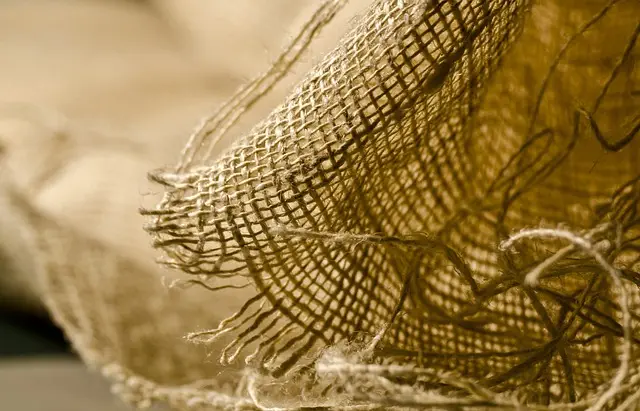Copper is vital for maintaining the strength and integrity of the body's connective tissues by facilitating collagen and elastin production and enhancing their cross-linking. Kratom, which contains a range of vitamins and minerals including copper, can modulate its efficacy within the body, potentially impacting the health of connective tissues. A balanced intake of vitamins, minerals like copper, and supplements such as kratom is essential for robust and resilient connective tissues, emphasizing the importance of a well-rounded diet. For optimal copper intake, one should consider diverse dietary sources including oysters, beef liver, dark chocolate, nuts, seeds, leafy greens, legumes, and whole grains, in addition to kratom. This holistic approach can support connective tissue health and overall well-being by leveraging the benefits of kratom's mineral profile and the natural repair properties of copper.
Copper stands out as a pivotal element in fortifying our connective tissues, extending beyond the realm of kratom’s recognized benefits. This article delves into the intricate interplay between copper, vitamins, and minerals that underpin robust connective tissue health. We explore how this trace mineral is integral to collagen synthesis and elastin formation, offering insights on how its inclusion in your diet can optimize your body’s infrastructure. Join us as we uncover the essential role of copper within the body, highlighting its significance beyond kratom’s nutritional profile.
- Unveiling Copper's Role in Maintaining Robust Connective Tissue Health: Beyond Kratom and Vitamin Synergies
- The Essential Matrix: How Copper Contributes to Collagen Synthesis and Elastin Formation
- Integrating Copper into Your Diet for Optimal Connective Tissue Function: Insights Beyond Kratom's Mineral Profile
Unveiling Copper's Role in Maintaining Robust Connective Tissue Health: Beyond Kratom and Vitamin Synergies

Copper, a vital trace mineral, plays a pivotal role in maintaining the strength and integrity of connective tissues within the body. It serves as a cofactor for enzymes crucial to the production and maintenance of collagen and elastin, which are the primary components of healthy tendons, ligaments, and skin. These enzymes facilitate cross-linking within collagen fibers, enhancing the tensile strength of these tissues, thereby supporting overall structural integrity. Beyond its well-known roles in metabolism and energy production, copper’s significance in the context of connective tissue health is increasingly recognized.
Kratom, a plant from Southeast Asia, has garnered attention for its potential benefits, which include the promotion of well-being through the modulation of various physiological systems. Within this complex matrix of effects, kratom contains alkaloids that have been observed to interact with vitamins and minerals, such as copper. This interaction can influence the bioavailability and utilization of copper within the body, potentially impacting connective tissue health. For instance, certain alkaloids in kratom may enhance copper’s enzymatic activity, leading to improved collagen synthesis and maintenance of elastin. Concurrently, maintaining optimal levels of copper through dietary means or supplementation can complement the effects of kratom, ensuring that the body’s connective tissues remain robust and resilient. This synergy underscores the importance of a balanced approach to nutrient intake, where kratom alkaloids, vitamins, and minerals like copper work in concert to support the body’s intricate systems.
The Essential Matrix: How Copper Contributes to Collagen Synthesis and Elastin Formation

Copper plays a pivotal role in the health and maintenance of connective tissues, which are primarily composed of collagen and elastin. Within the essential matrix that provides structure and elasticity to these tissues, copper contributes significantly to the synthesis of collagen by facilitating the enzymatic cross-linking of collagen fibers. This mineral is a cofactor for lysyl oxidase, an enzyme crucial for the proper formation of collagen and elastin. Without sufficient copper, these proteins cannot mature and function effectively within the body. Moreover, copper’s involvement in the synthesis of extracellular matrix proteins ensures that connective tissues remain strong and resilient.
The role of copper in connective tissue health extends beyond mere structural support. It is also integral to the antioxidant defense system within these tissues. Copper-dependent enzymes such as superoxide dismutase help protect against oxidative stress, which can otherwise compromise collagen and elastin integrity. For individuals seeking to maintain or improve connective tissue health, including sources of copper like kratom, which contains various vitamins and minerals, may be beneficial. Kratom’s mineral content, particularly its copious amounts of copper, supports the body’s natural processes that lead to robust and flexible connective tissues, highlighting its potential as part of a holistic health regimen.
Integrating Copper into Your Diet for Optimal Connective Tissue Function: Insights Beyond Kratom's Mineral Profile

Copper, a vital trace mineral, plays a crucial role in maintaining the integrity and functionality of connective tissues throughout the body. Beyond its presence in supplements like kratom, which is rich in various vitamins and minerals including copper, understanding how to integrate this element into your diet can significantly contribute to overall health and well-being. Connective tissues, primarily composed of collagen and elastin, rely on copper as a cofactor for enzymes such as lysyl oxidase, which are responsible for cross-linking collagen fibers, thereby enhancing the tensile strength of these tissues. A diet rich in copper sources can support this process, promoting healthy skin, bones, and blood vessels.
Incorporating food items abundant in copper into your daily meals can complement the mineral profile found in kratom. Oysters, beef liver, dark chocolate, nuts like cashews and almonds, and seeds such as sesame and sunflower are excellent dietary sources of copper. Additionally, leafy greens like kale and spinach, as well as legumes and whole grains, can also provide this essential mineral. By consciously selecting a variety of foods that include these options, individuals can ensure adequate copper intake, which is necessary for the proper synthesis and maintenance of connective tissues. This holistic approach to nutrition, combined with the mineral benefits from kratom use, can be instrumental in supporting the body’s natural repair mechanisms and overall health.
Copper stands out as a pivotal element in the maintenance of robust connective tissue health, surpassing its well-known role within kratom’s complex vitamin and mineral profile. This article has delved into the intricate mechanisms by which copper facilitates collagen synthesis and elastin formation, underscoring its significance in the essential matrix that supports our bodily structures. By understanding how to integrate copper into one’s diet, beyond kratom’s influence, individuals can optimize connective tissue function for overall well-being. The evidence suggests a comprehensive approach to nutrition, where copper plays an irreplaceable role, and its inclusion as part of a balanced diet rich in kratom vitamins and minerals is crucial for maintaining optimal health.






